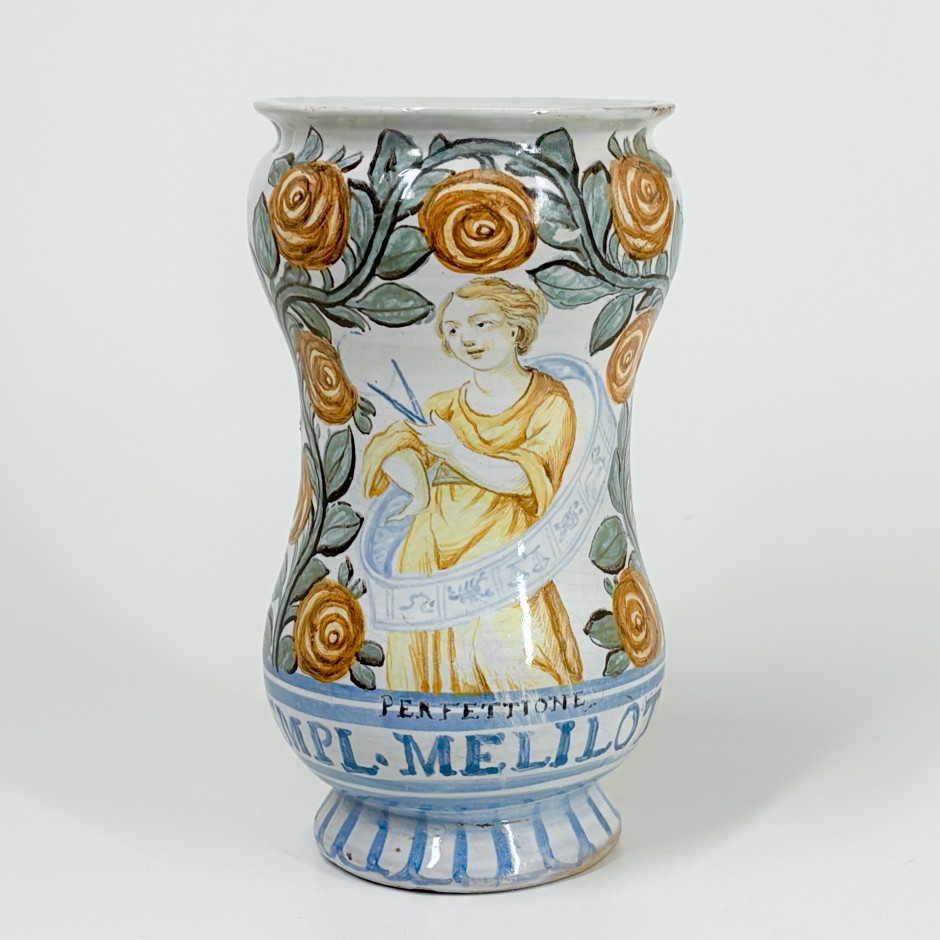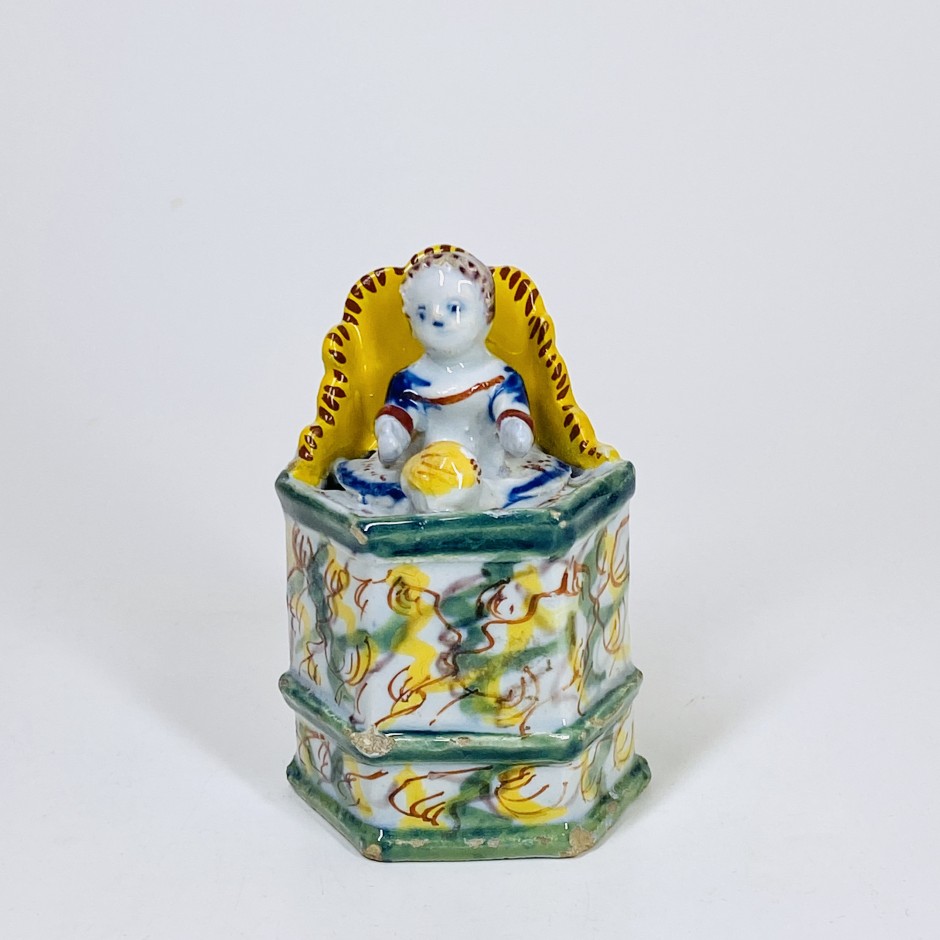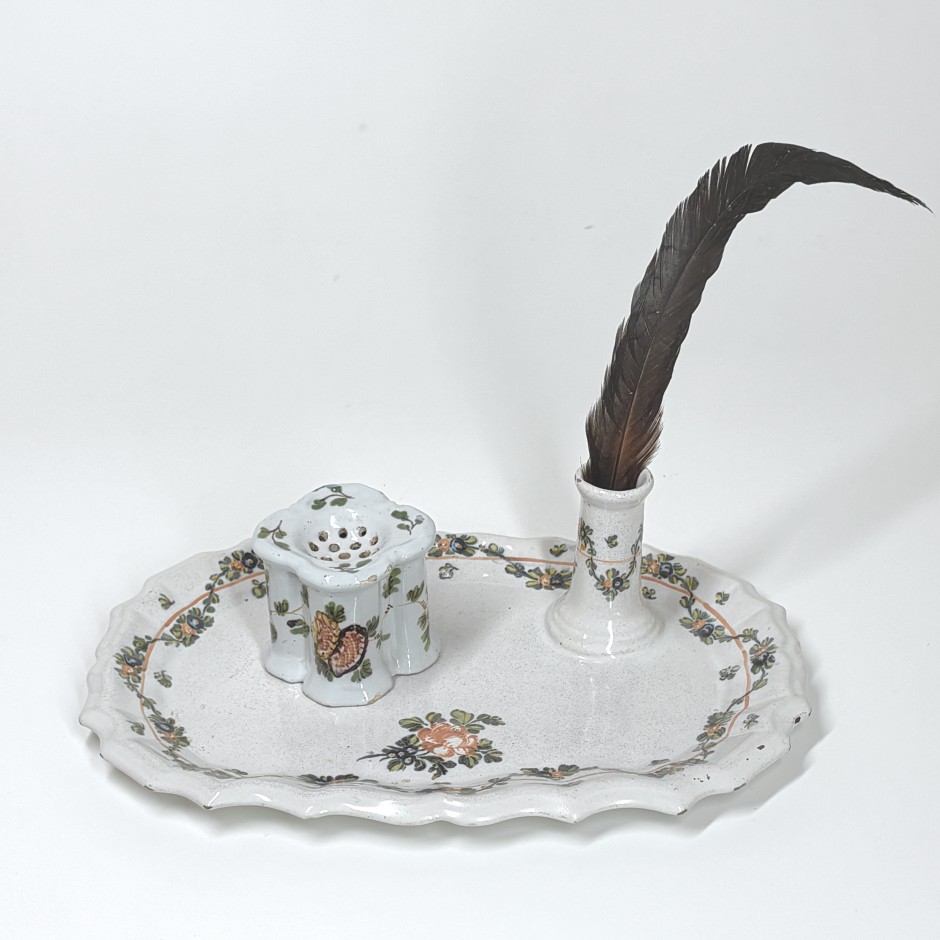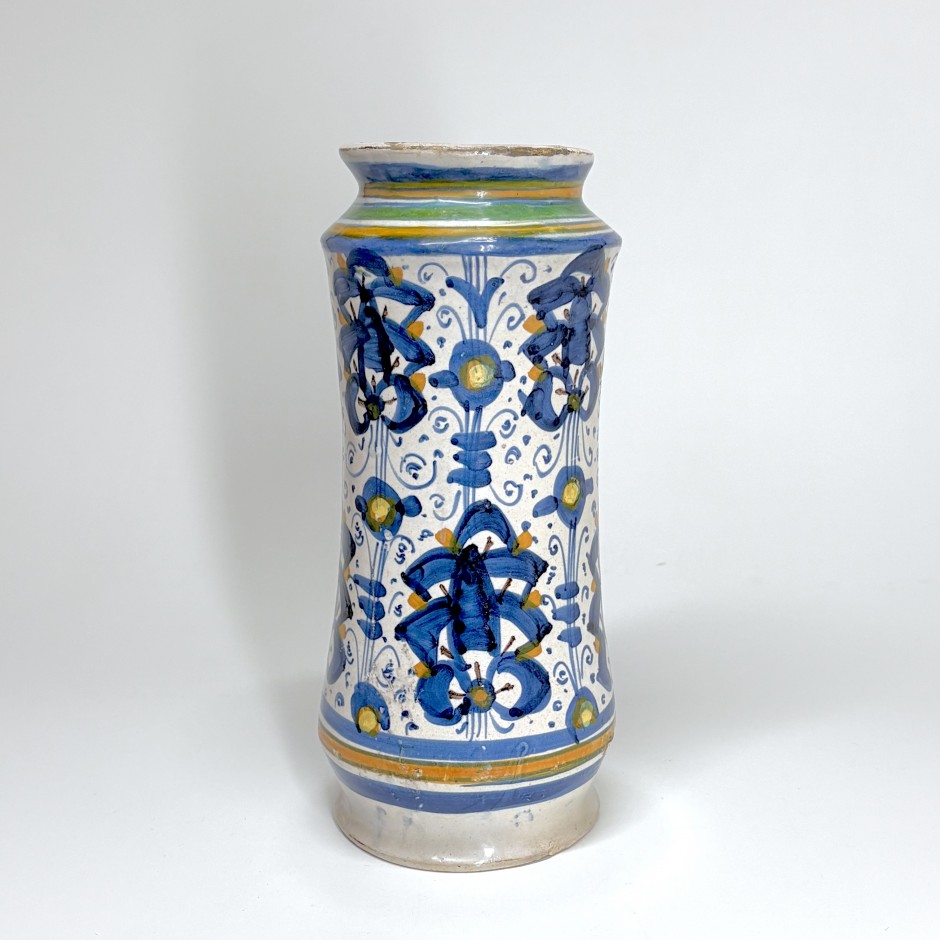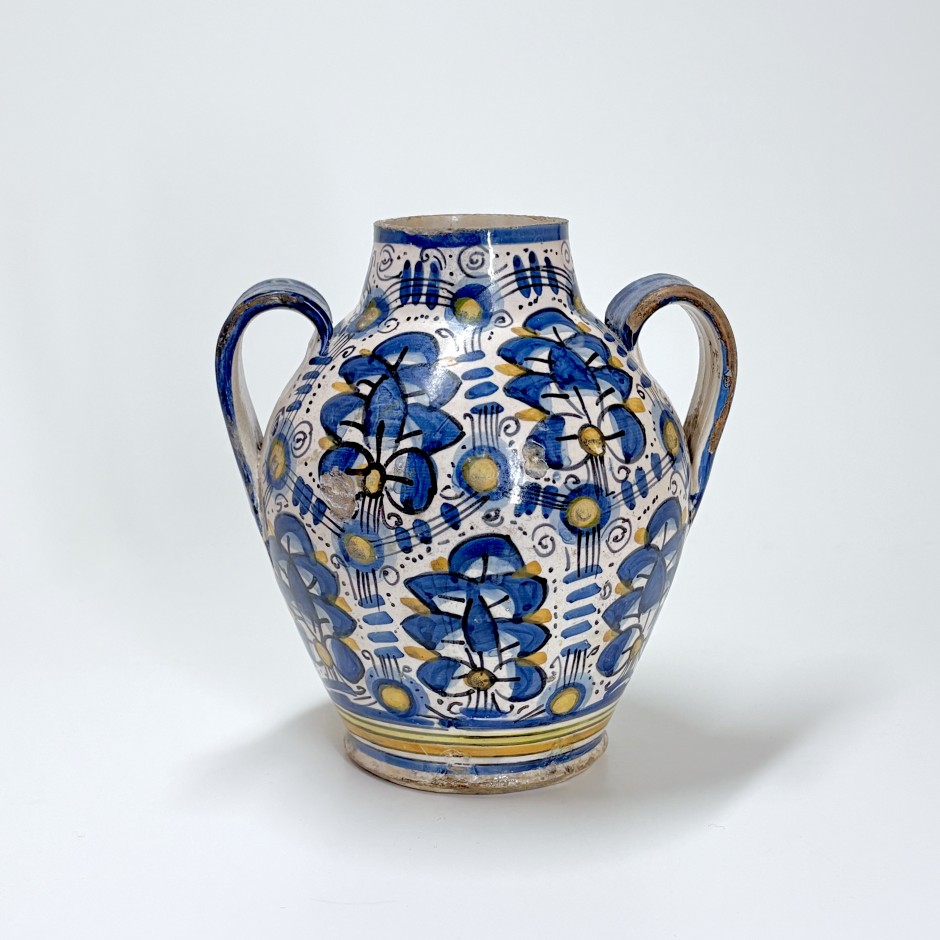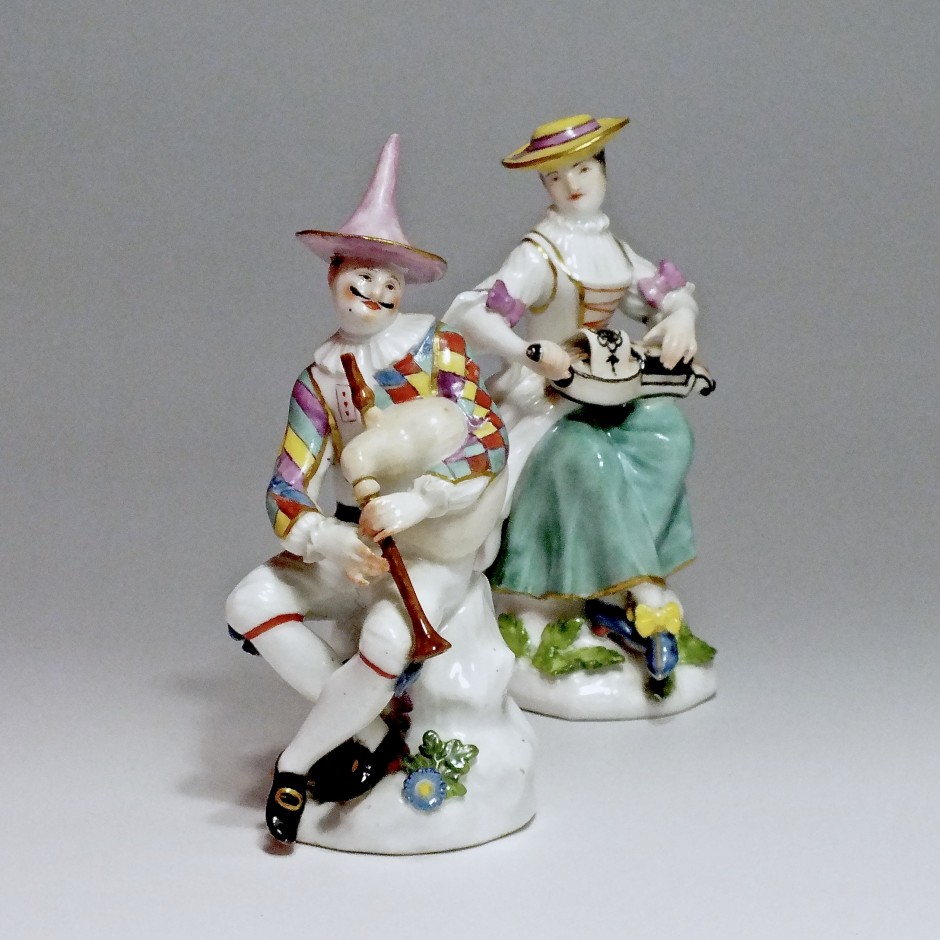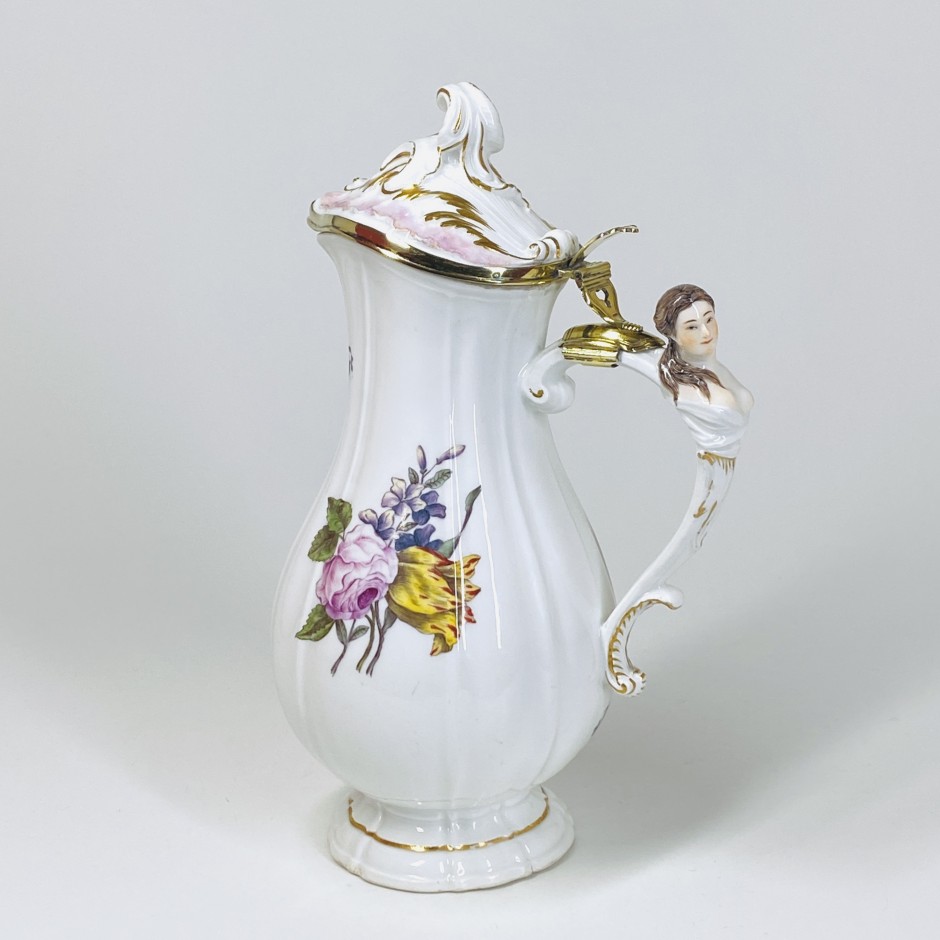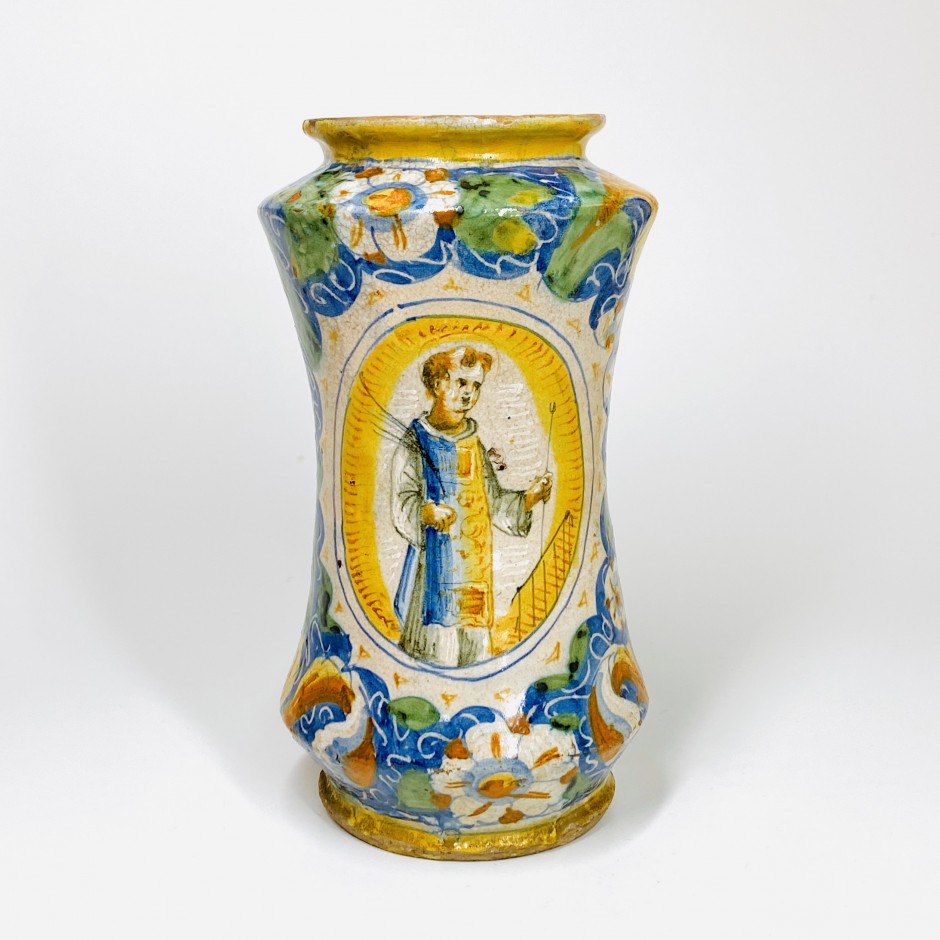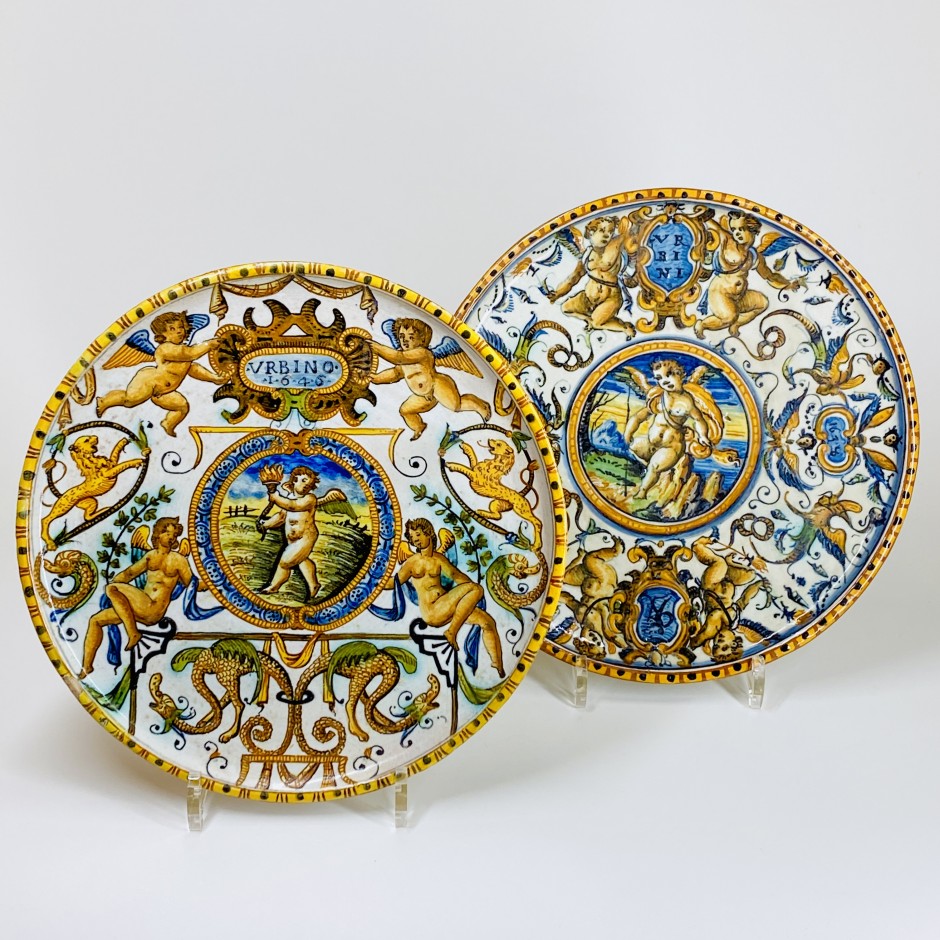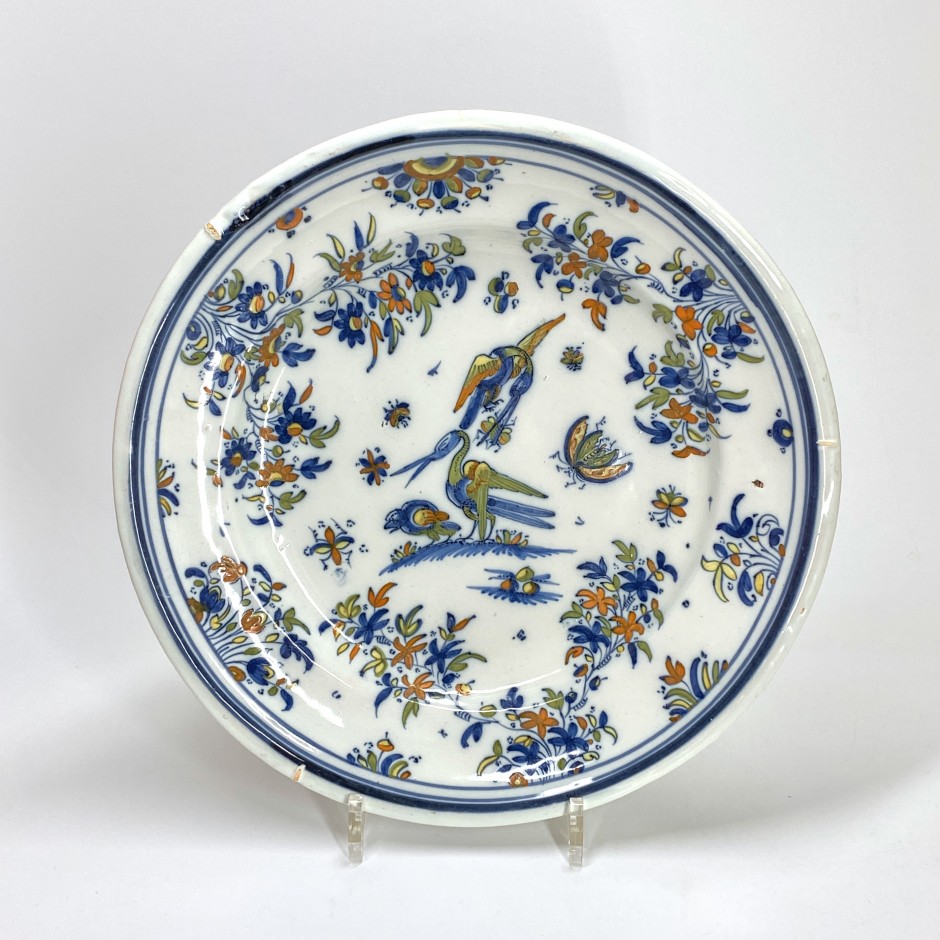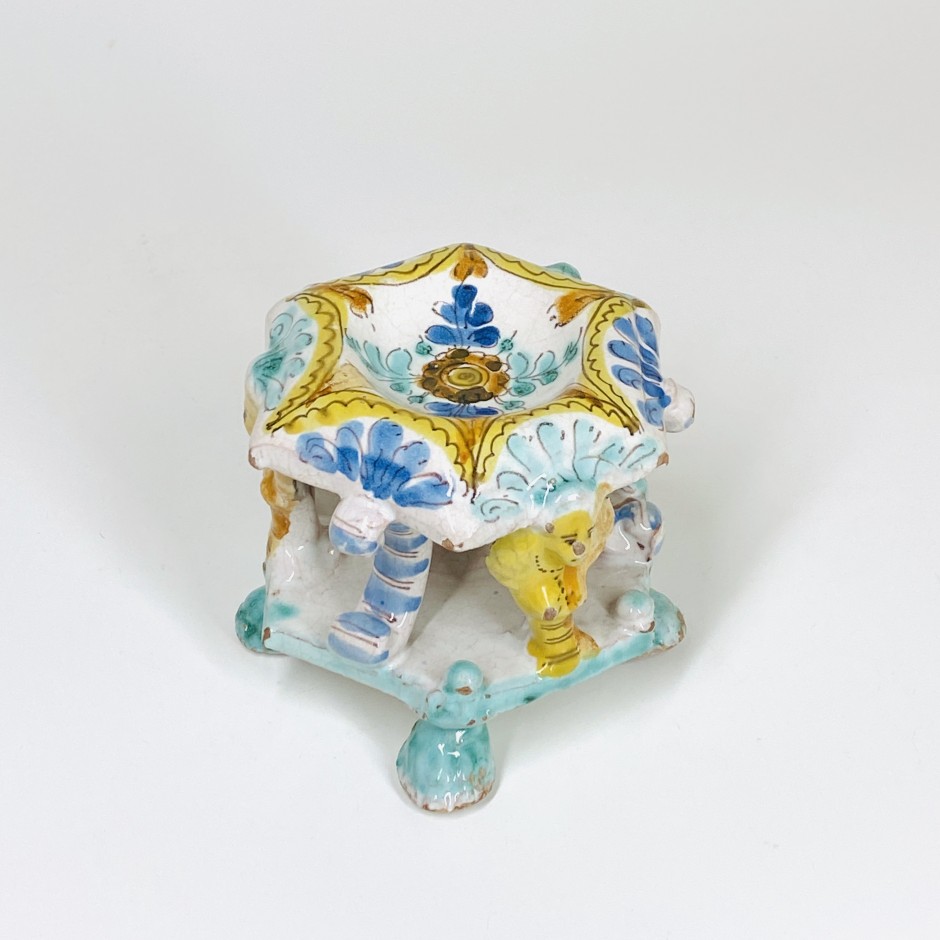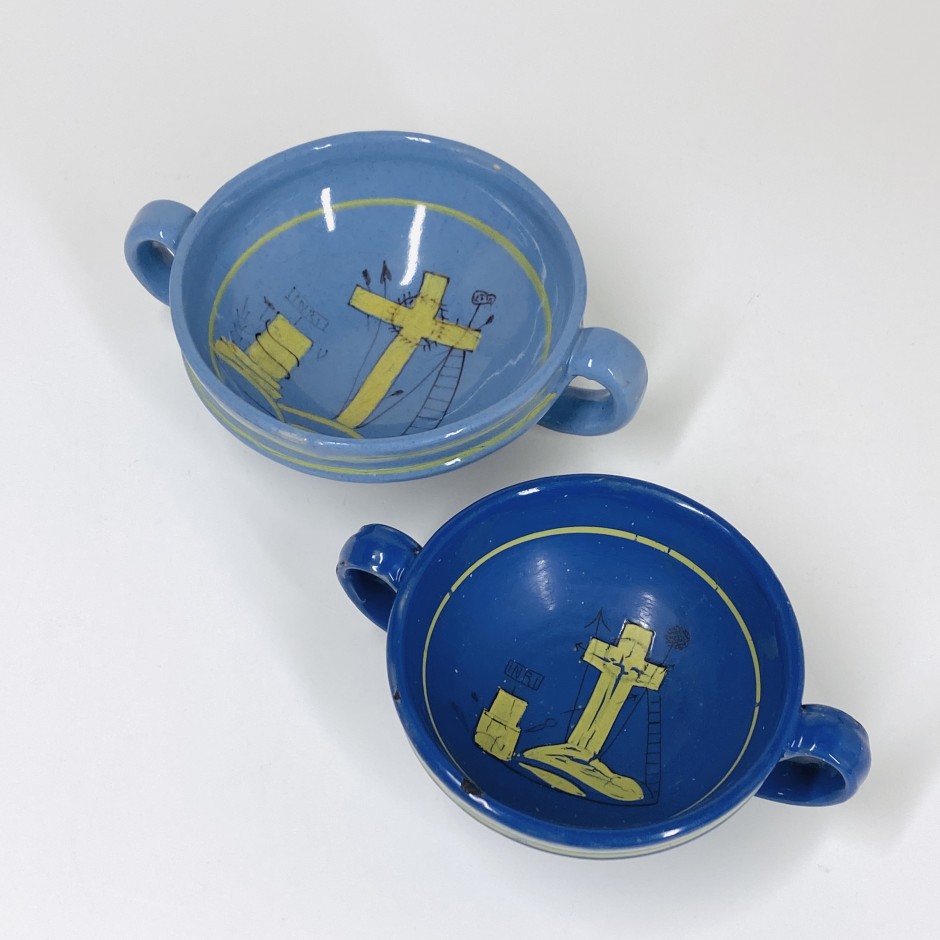European ceramics There are 27 products.
Albarello by Castelli depicting an allegory in the...
Albarello in Castelli majolica, curved shape with polychrome decoration depicting the allegory of perfection in the form of a young woman holding a compass and surrounded by the symbols of the zodiac in a frame of roses, surmounting the inscription "perfettione" and the pharmaceutical inscription "Empl. Melilot." - End of the seventeenth century
1 700,00 €Delft earthenware statuette - Eighteenth century
Charming polychrome Delft earthenware statuette representing a child in a high chair - Eighteenth century - Around 1750
1 600,00 €Nove di Bassano earthenware writing case -...
Nove di Bassano earthenware writing case in the shape of a rectangular tray with contours with a pen holder decorated in polychrome with a floral garland accompanied by an hourglass - Eighteenth century
650,00 €Albarello in Montelupo majolica - Seventeenth century
Beautiful albarello in Montelupo majolica of cylindrical shape decorated in polychrome with motifs called Persian palmettes or stylized "pine cones". fillets on the neck and base - Seventeenth century
1 250,00 €Montelupo majolica pharmacy vase - Seventeenth century
Montelupo majolica pharmacy vase with an ovoid shape and two handles, decorated in polychrome with motifs called Persian palmettes or stylized "pine cones". Seventeeth century
1 100,00 €Meissen - Harlequin and Columbine - j.j Kandler -...
Meissen - porcelain statuettes Pair representative "Harlequin and Columbine" sitting on rocks. Harlequin wearing a vest decorated with playing cards on background tiles and color stripes, playing the bagpipes, Columbine playing the hurdy-gurdy, polychrome and gold. J.J model Kandler - Eighteenth century - 1745
1 950,00 €Meissen porcelain ewer - Eighteenth century
Meissen porcelain ewer, the handle ending in a draped woman's bust and the grip of the lid in the shape of rocaille motifs, polychrome decoration of bouquets of flowers. Marked: crossed swords in blue. Eighteenth century, circa 1745. The frame of the lid in vermeil.
3 000,00 €Albarello in Venetian majolica - Sixteenth century
Beautiful slightly curved albarello in Venetian majolica with polychrome decoration on a blue background depicting Saint Laurent holding a palm in one hand and the grill in the other, in a medallion surrounded by flowers and leafy palms - Sixteenth century
3 500,00 €Two Urbino majolica tazzas - Seventeenth century...
Two Urbino majolica tazzas on pedestal, one decorated in the center with a cupid in a landscape in a medallion surrounded by female figures, grotesques and chimeras. Cartouche bearing the inscription URBINO and the date 1646. The other decorated with a cupid in a landscape in a medallion surrounded by grotesque figures and cupids holding torches and supporting cartouches, one bearing the inscription “URBINI, two other small cartouches framing the date 1638. Patanazzi workshop - Seventeenth century
6 500,00 €Alcora (Spain) - Dish with birds - Eighteenth century
Round dish with polychrome decoration of three birds, one in flight chasing an insect, the other two on a central mound. They are surrounded by butterflies and insects and large flowering branches and blue nets on the edge - Eighteenth century.
1 900,00 €San Quirico d'Orcia (Italy) - Table salt cellar -...
Polychrome earthenware table salt cellar from San Quirico d'Orcia with six sides, resting on four female busts and four consoles, all resting on four claw feet. Eighteenth century
680,00 €Two earthenware bowls decorated with the crucifixion...
Two earthenware bowls with two handles, with a blue background, decorated in yellow and black with the crucifixion on Mount Golgotha - Netherlands ? - Seventeenth century
700,00 €
